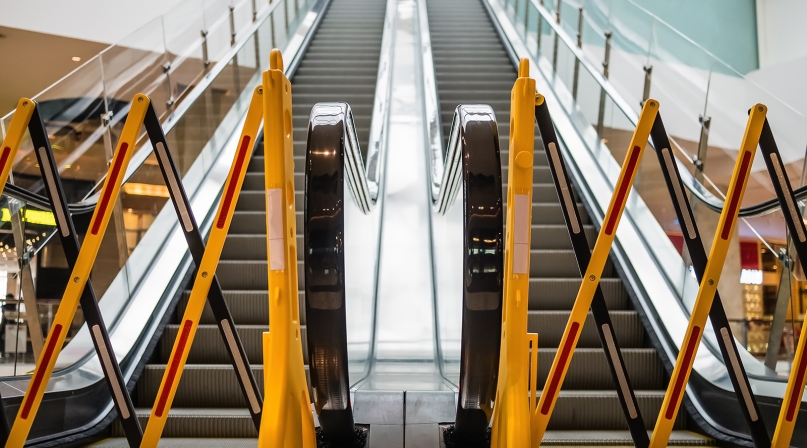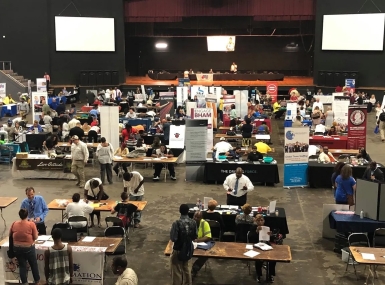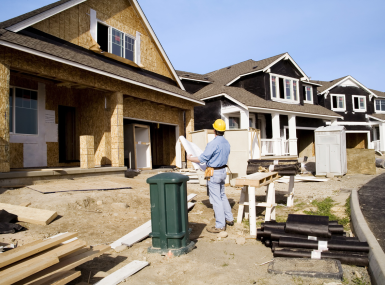Mall reboots help counties’ bottom line

Key Takeaways
Getting your ears pierced with your best friend, shopping during the holidays, getting that first job — they’re all the kinds of things you might do at a shopping mall. But in some areas of the country, the way of life that loomed so large is falling by the wayside.
You will still find some areas where malls are thriving, but in other pockets of the country, they are either barely hanging on, being demolished or getting a reboot.
“Even though malls account for only 9 percent of our retail real estate, they’re definitely the most high-profile — for local governments, these have traditionally been cash cows as tax revenue generators,” said Garrick Brown, vice president, Retail Research, the Americas, for Cushman & Wakefield, a real estate research firm.
In 2017, nearly 8,500 stores closed, surpassing the number that occurred during the great recession. Closures in 2018 are expected to match or exceed that level, according to Cushman & Wakefield.
The types of brick-and-mortar retail businesses that are closing up in malls include consumer electronics, apparel, department stores, books/music/video and sporting goods. Stores that are on the upswing are dollar discount stores, discount grocery, off-price apparel, beauty or cosmetics, fitness and health clubs, fast food, coffee and fast fashion.
In addition to stores closing, fewer people are visiting malls. In 2010, there were 35 million visits to malls. Three years later, visits declined by 50 percent to 17 million.
About 300 “C-level” malls (less than $300 in sales per square foot) across the country will go under in the next five years unless there is a “massive investment of capital,” Brown predicted. “They would have to completely redesign the mall, make it more mixed-use. And these mall owners, most of them don’t have the capital to do that.” Some malls will be OK, he noted, “if they’re the only game in town.”
Brown said some pockets of the country are oversaturated with malls and likens the situation to a cattle herd: “The herd was over-populated and those that were weak are already dying.”
When a shopping mall goes under, counties can lose tax revenue, local jobs and a social hub where residents gather.
“Growing up, I worked at Springfield Mall,” said Fairfax County, Va. Supervisor Jeff McKay. “I hung out at Springfield Mall. I vividly remembered the sense of civic pride it brought to everyone in our community and how great it was to have a thriving mall here in Lee District.”
When the mall fell into disrepair, McKay worked “hand-in-glove” with the builder, county staff and all major role players to get them through the process and re-open as quickly as possible. The mall held a grand opening several years ago after a $250 million renovation.
And there is more hope on the horizon. Ellen Dunham-Jones, an architecture professor at Georgia Tech University, said that the closing of some suburban shopping centers is an opportunity to turn “unsustainable” areas into sustainable areas. Developers are finding new ways to use abandoned malls including turning them into churches, medical centers, nursing homes, office space and colleges, she said.
Another potential use: Affordable housing, Brown said. Shopping mall sites can and are being turned around by developers to “build an urban-suburban village with multi-family rentals and condos or a big health-care system. That makes a lot of sense.” That’s the case in Hinds County, Miss., where a traditional shopping mall has been turned into a “medical mall.” The old Jackson mall now employs about 1,500 and some businesses in the mall stayed open to cater to the medical community.
There’s talk that another Hinds County shopping mall, Metro Center, may soon house a local community college, said Tax Assessor Charles Stokes. “The good thing is, the mall is still on the tax roll. It won’t go off unless it’s torn down.”
Top 10 malls that pay the most in property taxes:
Stokes said he noticed that remaining and surrounding local businesses are renovating their spaces to attract students. “The businesses in there, not related to the mall — the county still gets income from them,” he said. “It’s better to do it that way then to let the building sit there empty and take the whole neighborhood down.”
Mixed-use developments are another way to revive a dying shopping mall. When Villa Italia Mall opened in 1966 in Jefferson County, Colo., it saw 725,000 people from surrounding states visit during its opening weekend. For the next 35 years, “Villa” as locals called it, was a social and commercial hub of the county. By 1999, the mall had lost 50 percent of its tenants. By 2001, it closed. Jefferson County’s property tax revenue from the mall by then was $543,100.
After the 104-acre site underwent an environmental cleanup (it had also been the site of a dry cleaners and auto service shops), it was revamped as a mixed-use retail, office and entertainment space that now generates $2 million in tax revenue each year for the county. Brown noted that one of his favorite examples of another mixed use development is in Collin County, Texas, home to The Shops at Legacy, a 2,600-acre planned community.
Some shopping centers are being used as part of a business that some say is part of the reason malls are in a death spiral. A former shopping center in Cuyahoga County, Ohio — Randall Park Mall — which thrived for 40 years, went the way of the wrecking ball a few years ago. Now, the site will be an Amazon fulfillment center. In another part of the county, Euclid Square Mall is also being turned into an Amazon fulfillment center. Workers at these centers will fill online orders for the types of goods that people once purchased at malls. Amazon has received more than $1 billion in tax breaks across 129 communities including in some counties where they made multi-year deals to not pay property taxes.
Some malls reinvent themselves to fit desires of millennials and empty nesters. The first U.S. enclosed shopping mall, Southdale, opened in 1956 in Hennepin County, Minn.
It has undergone numerous renovations and is adding an athletic club (in place of a J.C. Penney) promising a “resort style” experience including a rooftop “beach club.” Plans call for adding multi-family housing and a DMV office.
“What Southdale is doing now, reinventing itself as a community space, as we look at the changing retail environment, it’s an appropriate course of action for a lot of these malls,” said Hennepin County Commissioner Jan Callison.
The “father of the American mall,” Austrian architect Victor Gruen, designed Southdale. His original plans called for housing, museums and a big man-made lake — sounding much like the mixed-use shopping centers of today.
“He went out there in the ‘50s and saw all these tract homes with no center of culture and thought it was a wasteland” Brown said.
“All of his plans didn’t entirely get built. This biographer talked to him right before he died and asked him ‘How does it feel to be the father of the American mall?’ He said ‘If I’m the father of the American mall, I renounce paternity!’”
Today, Brown said, if a mall wants to survive, ‘you have to embrace everything the original designer of the first enclosed mall envisioned but never got realized in his lifetime.”
Attachments
Related News

House Passes Historic Outdoor Recreation Legislation
The U.S. House passed the bipartisan EXPLORE Act (H.R.6492) on April 9 to boost outdoor recreation opportunities on public lands and aid local economies

Counties offer a second chance after incarceration
From job fairs and housing programs to educational opportunities, counties offer a second chance after incarceration.

